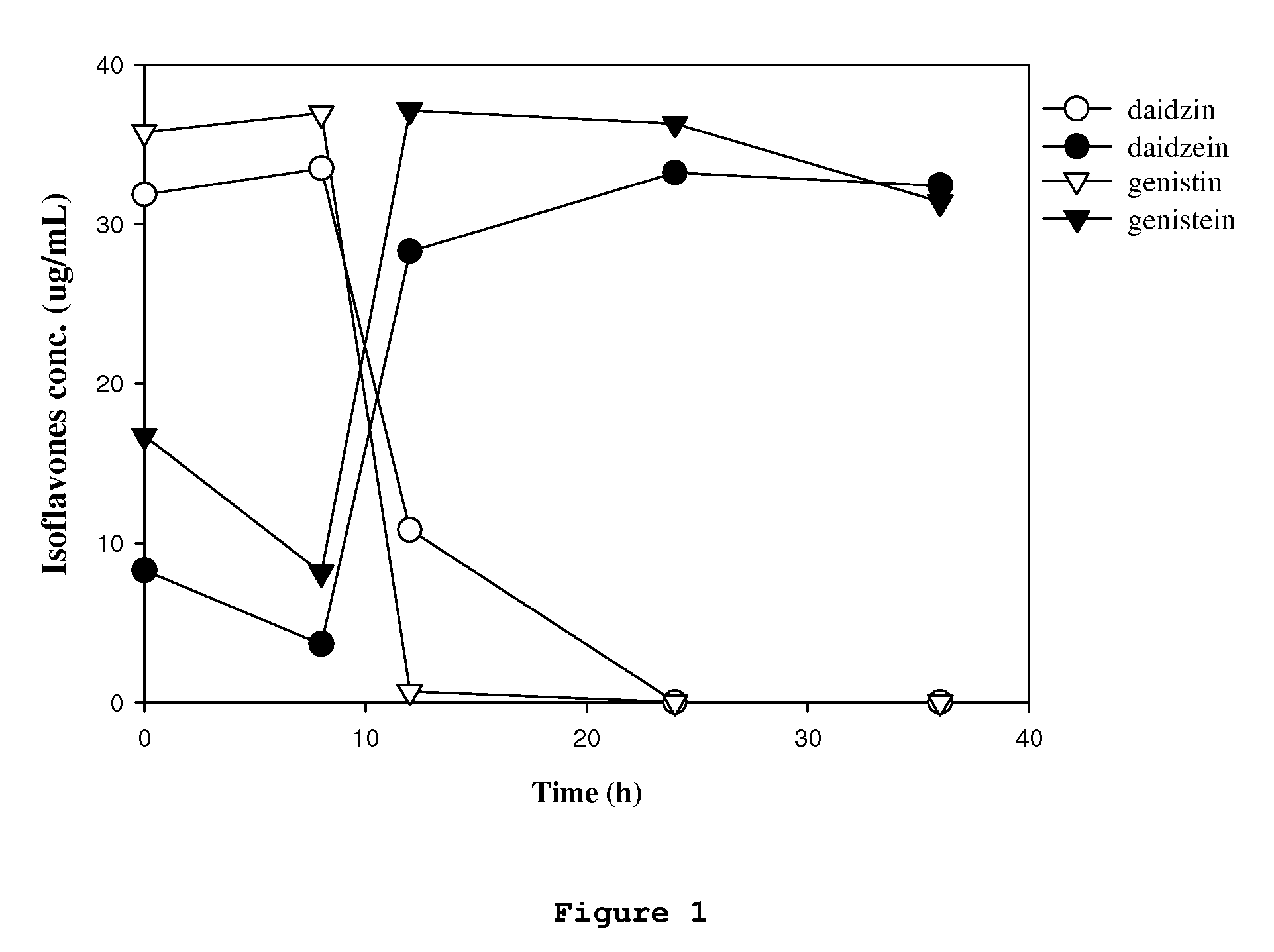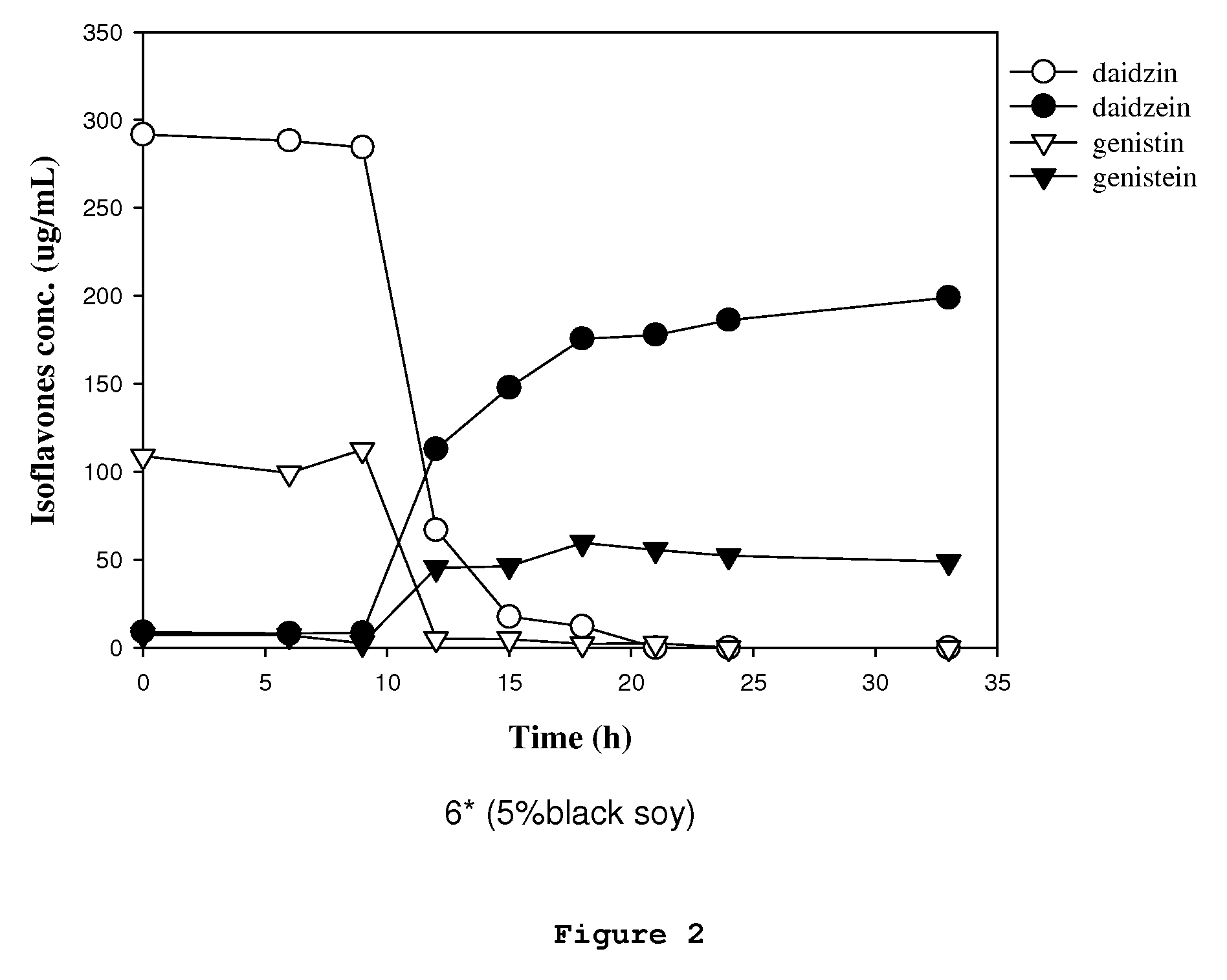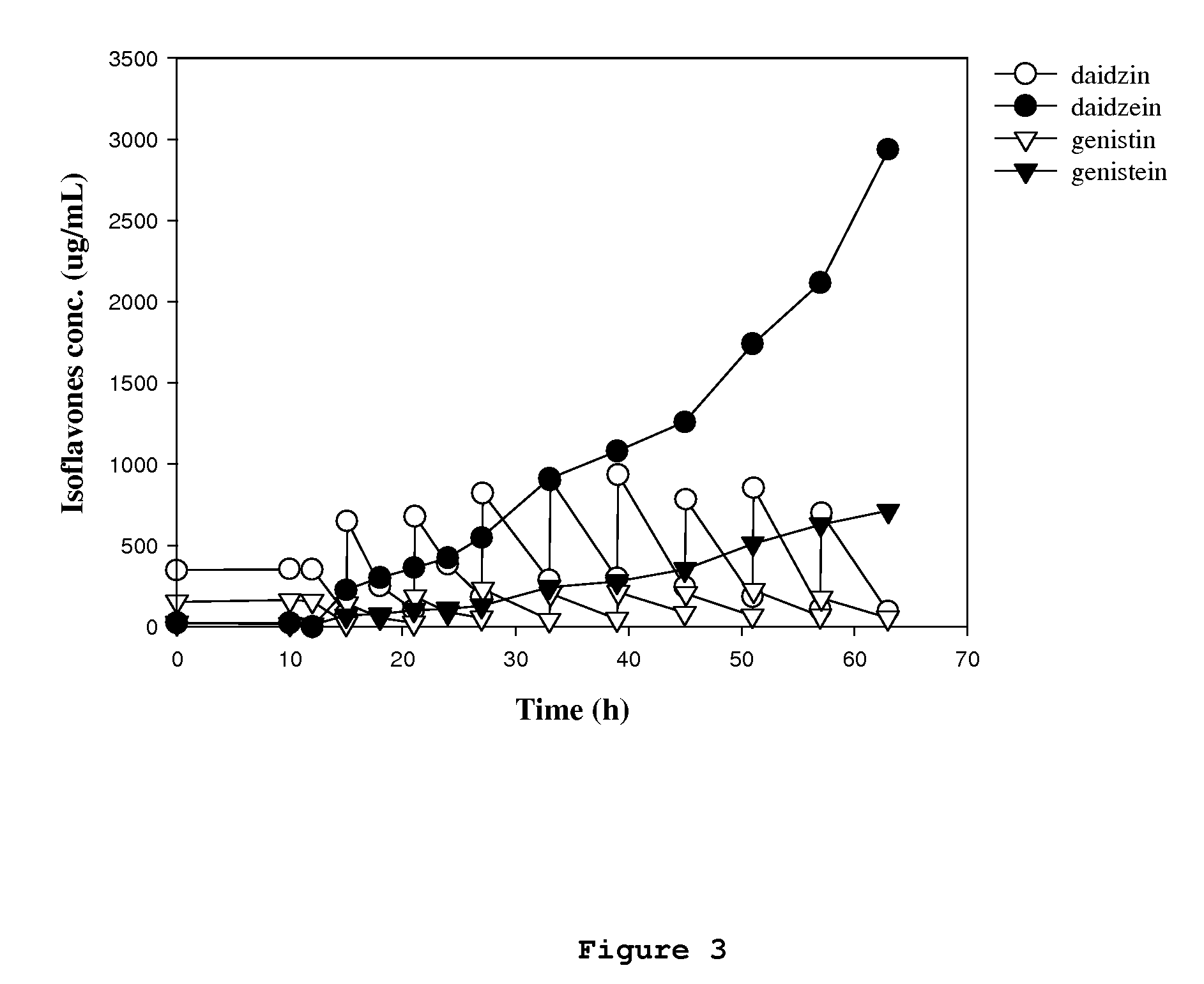Process for preparation of aglucone isoflavones
a technology of aglucone and isoflavone, which is applied in the field of preparation of aglucone isoflavone, can solve the problems of inability to use mass production for applications in the medicinal field or the field of health foods, and achieve the effect of improving the quality of glucone isoflavon
- Summary
- Abstract
- Description
- Claims
- Application Information
AI Technical Summary
Benefits of technology
Problems solved by technology
Method used
Image
Examples
example 1
[0036]In a 500 ml flask, 100 ml culture medium containing 5% (w / v) of pulse crops was prepared, and subjected to autoclaving at 121° C. for 15 minutes. Bacillus subtilis natto was then inoculated into the medium and cultivated in a shaker at 37° C., 125 rpm. At the beginning of the cultivation, the viable cell number was 9.6×103 cfu / ml. After 12 h, number was of 6×108 cfu / ml, which was maintained to the end of the cultivation (24 h after inoculation). p-nitrophenyl-β-D-glucoside (PNPG) was used as substrates to determine the enzyme activity of β-glucosidase throughout the cultivation process. The β-glucosidase activity was detectable 8 h after inoculation and increased to the maximum (3.3 U / ml) at 15 to 18 h, then the β-glucosidase activity decreased to 0.3 U / ml after 21 h of cultivation. The concentration of daidzin and genistin were 76.5 and 82.7 μM, respectively, at the beginning of the cultivation, and started to decrease after 8 h of cultivation. At 12 h, the concentrations of ...
example 2
[0037]100 ml culture medium of 5% (w / v) pulse crops was prepared in a 500 ml flask and materials containing glucone isoflavones (10 mg of genistin and 30 mg of daidzin were contained) were added. After being autoclaved at 121° C. for 15 minutes, Bacillus subtilis natto was then inoculated into the medium and cultivated in a shaker at 37° C., 125 rpm. At the beginning of the cultivation, the viable cell number is 1.0×105 cfu / ml. After 12 h of cultivation, the number was 6.9×108 cfu / ml, which was maintained to the end of the cultivation (24 h after inoculation). The enzyme activity of β-glucosidase was monitored throughout the cultivation process. The β-glucosidase activity was detectable 8 h after inoculation and increased gradually. It achieved the maximum 12 h after inoculation and decreased to 1.7 U / ml after 15 h of cultivation. Between 18 and 21 h the enzyme activity remained at 1.0 U / ml. Deglycosylation of isoflavone glycosides by Bacillus subtilis natto throughout the cultivati...
example 3
[0038]100 ml culture medium of 5% (w / v) pulse crops was prepared in a 500 ml flask and materials containing heat-extracted glucone isoflavones (containing 10 mg of genistin and 30 mg of daidzin) were added. After being autoclaved at 121° C. for 15 minutes, 1 ml of pre-cultivated Bacillus subtilis natto was inoculated into the medium and cultivated in a shaker at 37° C., 250 rpm. After 15 h of cultivation, glucone isoflavones were fed every 6 h for a total of 8 feeds and a total of 266 mg of genistin and 1036 mg of daidzin were added. The results showed that the bacteria proliferated between 1 and 10 h, where 8.5×104 cfu / ml viable cells at the beginning of the cultivation increased to 1.7×109 cfu / ml at 10 h, and entered a stationary phase of 1.4×108 to 2.7×108 cfu / ml until the end of the cultivation (63 h after inoculation). The β-glucosidase activity was detectable 12 h after inoculation and increased gradually. It achieved the maximum of 9.7 U / ml 27 h after inoculation and then dec...
PUM
| Property | Measurement | Unit |
|---|---|---|
| Temperature | aaaaa | aaaaa |
| Temperature | aaaaa | aaaaa |
| Temperature | aaaaa | aaaaa |
Abstract
Description
Claims
Application Information
 Login to View More
Login to View More - R&D
- Intellectual Property
- Life Sciences
- Materials
- Tech Scout
- Unparalleled Data Quality
- Higher Quality Content
- 60% Fewer Hallucinations
Browse by: Latest US Patents, China's latest patents, Technical Efficacy Thesaurus, Application Domain, Technology Topic, Popular Technical Reports.
© 2025 PatSnap. All rights reserved.Legal|Privacy policy|Modern Slavery Act Transparency Statement|Sitemap|About US| Contact US: help@patsnap.com



